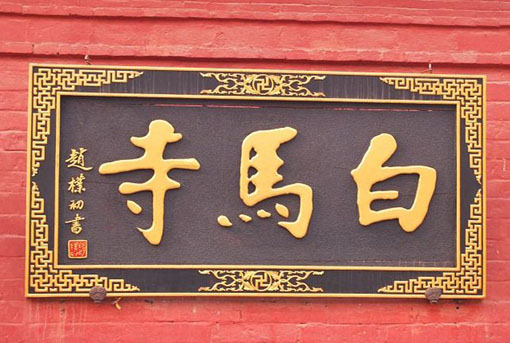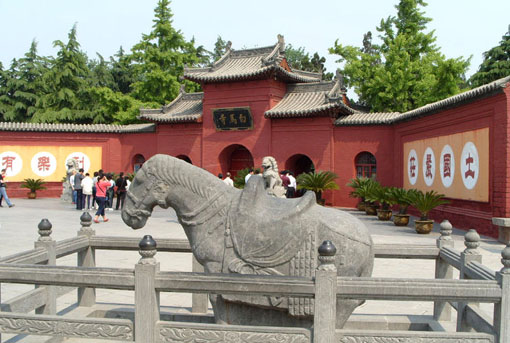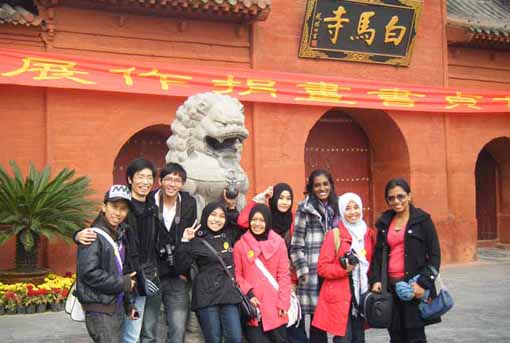|
||||||||||||||
|
||||||||||||||
White Horse TempleWhite Horse Temple
In the year 64 of the Eastern Han Dynasty (25-220), Emperor Ming sent a delegation of his men to study Buddhism in the western world. After three years, two eminent Indian monks, She Moteng and Zhu Falan, came back with the delegation. They brought with them a white horse carrying Buddhist sutras and Buddhist figures on its back. This was the first time that Buddhism appeared in China.
To express his thanks to the two monks and their white horse, the emperor ordered the building of a monastery which he named the White Horse Temple during the following year. During this time, the two monks were busy translating sutras in the temple until they completed the Chinese sutra 'Forty-two Chapter Sutra', which attracted many monks and meant that the temple became a centre for Buddhist activity in China. It is for this reason that the temple is honored as the 'Founder's Home' and the 'Cradle of Buddhism in China'.
The temple, which is located about seven miles away from the city of Louyang, is covered with green ancient trees and appears solemn and tranquil. Outside the gate, there is a pool with fences around and lovely fish in the water. It is for the believers to set free the captive animals. After crossing the pool via a stone bridge, you will enter the temple. To the east and west of the gate are the tombs of She Moteng and Zhu Falan, which are one of the six most famous sights in the temple. In the east corner stands a tablet pavilion. The Chinese characters written on the tablet are the work of a Chinese calligrapher abbot Shamen Wencai, designed during the Yuan Dynasty (1271-368). They are written in his familiarly free and easy style and describe the history of the temple. The temple boasts great antique architecture which has remained intact for over 1,900 years. The Hall of Heavenly Kings, Hall of the Great Buddha, Hall of Mahavira, Hall of Guidance and the Cool and Clear Terrace appear in proper order in the temple, as they were when it was first built.
|




